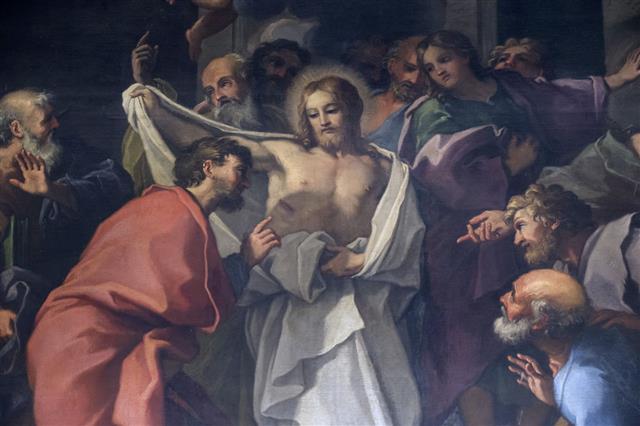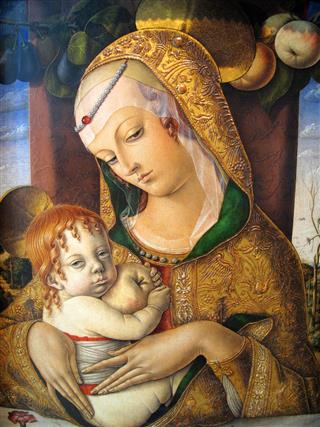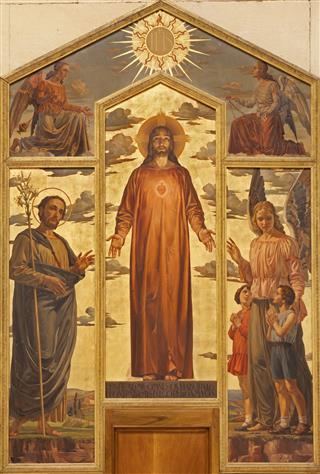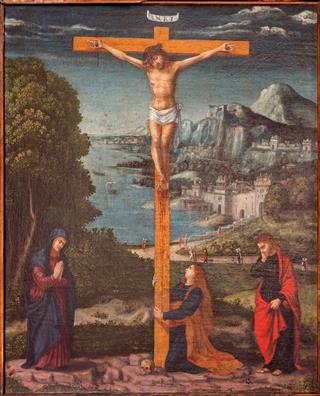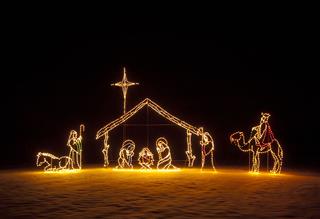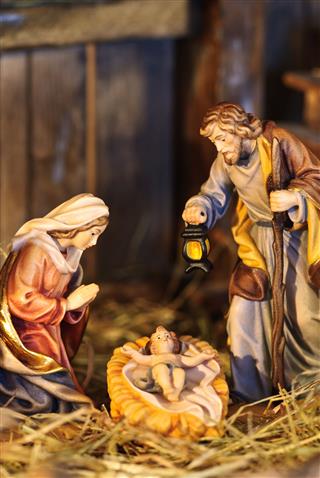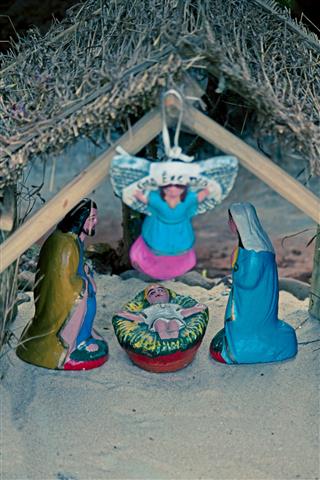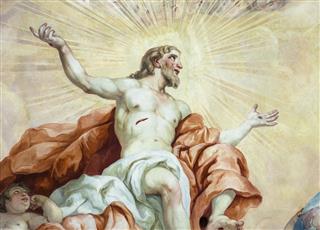
The ‘Grail’ legends, the secret ‘Prior of Sion’ protecting the royal bloodline, the ‘Lost Gospels’, and the painting of the ‘Last Supper’ by Leonardo Da Vinci – all have created enough conspiracies and theories regarding the supposed relationship between Mary Magdalene and Jesus. This post investigates the related controversies behind Jesus and Mary Magdalene relation.
So much for Love..
On 22nd July, 1206 – on the feast of St. Mary Magdalene, an obscure French town of Béziers witnessed mass massacre by crusaders from Rome for their belief that Mary Magdalene had once been the companion of Jesus.
On 18th September, 2012, Harvard Divinity School professor Karen L. King unveiled a fragmented ancient papyrus at International Coptic Congress in Rome. The piece in question created a huge media propaganda after being dubbed as the ‘Gospel of Jesus’s wife’. The frail parchment is written in ancient Egyptian Coptic Christian language, and carbon dating proves it probably belongs to the fourth century. The controversial segment that’s enough to shake beliefs is translated as: “Jesus said to them, my wife.” “… she will be able to be my disciple,” “Mary is worthy of it” and, “As for me, I dwell with her in order to …”
It appears that Jesus is in deep conversation with his disciples over Mary Magdalene as his rightful disciple. The role of women as disciples was highly debated in early Christianity. And considering the background that Church presents about Mary Magdalene, it is obvious that her role as Jesus’s disciple would be unworthy during the said period.
The propaganda over the said relationship between Mary Magdalene and Jesus has been brewing hot and cold over the centuries, the worthiness of which is still highly anticipated.
About Mary Magdalene
► The ‘Magdalene’ reference could mean she originated from a flourishing fishing village known as ‘Magdala’ which is ‘Migdal’ in present world. It is situated on the north-west side of the Sea of Galilee, 5 Kilometers north of Tiberia at the foot of mount Arbel in Israel. Her birth and parentage are not recorded, she is directly introduced in the Gospels of the New Testament as the woman from whom Jesus cast out seven demons. It has been mentioned twice in her accord in the gospels.
❝And certain women, who had been healed of evil spirits and infirmities, Mary called Magdalene, out of whom went seven demons❞ – Luke 8:2
❝Now when Jesus was risen early the first day of the week, he appeared first to Mary Magdalene, out of whom he had cast seven demons.❞ – Mark 16:9
► A highly disputable fact remains that historians and popular public opinion have termed her as the prostitute who repents for her sins after Jesus rescues her from the angry stone-pelting mob, and the woman who anointed and wiped the feet of Jesus with aromatic perfume just before his last supper. Ironically, the Bible never once refers her to be the prostitute in question. In fact it places her in high regard as the woman who stood by Jesus during his time of suffering, crucifixion, and was bestowed by the honor of being the first witness of his resurrection.
❝But standing by the cross of Jesus were His mother, and His mother’s sister, Mary the wife of Clopas, and Mary Magdalene.❞ – John 19:25
❝Now after the Sabbath, as it began to dawn toward the first day of the week, Mary Magdalene and the other Mary came to look at the grave.❞ – Matthew 28:1
❝When the Sabbath was over, Mary Magdalene, and Mary the mother of James, and Salome, bought spices, so that they might come and anoint Him.❞ – Mark 16:1
❝Now on the first day of the week Mary Magdalene came early to the tomb, while it was still dark, and saw the stone already taken away from the tomb.❞ – John 20:1
❝Mary Magdalene came, announcing to the disciples, “I have seen the Lord,” and that He had said these things to her.❞ – John 20:18
► All the accounts and references from the gospels point towards the fact that she was a witness to the life of Jesus by being an admirer of his teachings and being obligated as the one from whom Jesus had driven out demons. She dedicated her life to follow him and stand by him during his sufferings much more than any of his disciples.
► Her death is highly mysterious and subjected to various speculations. After the account of Resurrection, there is no further reference regarding her in the Gospels about her journey in life as a disciple or her nature of death. According to ancient texts of Gregory of Tours and Greek Orthodox Church tradition, she retired in Ephesus and died. Thereafter which her body (or relics) was moved to Constantinople in 886. Other legends hold that she lived a hermit life in Gaul after Jesus’ crucifixion or settled in a desert.
Conspiracy Theories
The Gnostic/Lost Gospels
► The Gnostic Gospels are a compendium of about 52 ancient texts grounded upon the precepts of several spiritual leaders, scripted from the 2nd to the 4th century AD. The word “gnostic” is derived from “gnosis,” which implies “knowledge” in Greek. The Gnostics conceived that they were partakers of a secret knowledge about the divine, hence the name.
► They were basically heretic writers and their written accounts about early Christianity were recorded in the Gnostic Gospels or the ‘Lost Gospels’, these were discovered at Nag Hammadi, Upper Egypt in 1945. The Gospels include the Gospel of Thomas, Gospel of Philip, Gospel of Mary, Gospel of the Egyptians, and the Gospel of Truth.
► Historians and theorists have since claimed that the Gospel of Mary is in fact written by Mary Magdalene as a principal disciple of Jesus and it contains the teachings about women’s role in early church. Written in plain Coptic language, the gospel dates back to second century CE, the narration in the Gospel features around Jesus explaining to the disciples the mysteries of salvation. All seem to be in doubt except Mary, she fully comprehends the teachings of Jesus thus thereby attracting criticism from fellow disciples on being favored highly by Christ. The texts establish her role as the first woman apostle or disciple of Christ.
► The recent eye of storm is a book titled ‘The Lost Gospel’ claiming to have unearthed the secret marriage between Mary Magdalene and Jesus. Jacobovici, a Canadian-Israeli documentary-maker, and co-author Barrie Wilson, a professor at York University in Toronto, have grounded their book on a new version of ‘The Story of Joseph and Aseneth’ translated from a sixth-century manuscript in the ancient language of Syriac.
► They claim that Joseph and Aseneth are none other than Jesus and Mary Magdalene under false names and they were married with two children. The book also suggests that she was the ‘Bride of God’ as Jesus was the ‘Son of God.’
► Biblical scholars, theologians, and religious groups term the book as a hogwash and product of overactive imagination that does not have any strong historic backing.
The Holy Grail
► Legends abound that Mary Magdalene arrived with a small group that included Joseph of Arimathea and Lazarus and his sister Martha, at France to preach the Christian gospel. She later retired as a recluse until her death in a small cottage on a hill at Sainte-Baume. According to this legend, Mary’s body was entombed at Villa Lata (later St. Maximin), in Aix-en-Provence. During the 730s and 740s, according to historian Sigebert, her remains were shifted to Vézelay for the fear of Saracen raids. In 1279, an ancient shrine was uncovered during the construction of a Dominican convent at Sainte-Baume on orders of King Charles II of Naples. In 1600, the remains disclosed were safeguarded by a sarcophagus by the order of Pope Clement VIII. After the Napoleonic wars, the convent at Sainte-Baume was re-constructed, and thrived as a pilgrimage site. However, the Roman Catholic Church does not affirm the controversy that the relics at Sainte-Baume are those of Mary Magdalene.
► From here stem the stories of the Holy Grail or the Royal Bloodline. Commonly, the grail is identified as the chalice that Jesus drank from at the Last Supper and that Joseph of Arimathea used to collect Jesus’s blood when he was crucified. It turned out the quest to find this Holy Grail became the prime subject of medieval French literature. French poet Chrétien de Troyes is accredited of presenting the grail as a providential object in his early-12th century romance, ‘Perceval.’ But it was Sir Galahad, a knight of King Arthur’s Round Table and one of the three successors of the Holy Grail who popularized the ‘Queste del Saint Graal’ or ‘Quest for the Holy Grail’. Many historians believe that these Arthurian legends are a mere fictional imaginations of medieval writers inspired by Celtic traditions.
► San gréal, actually is Sang réal, which literally means “royal blood” in Old French and it points that Holy Grail is not a divine chalice, but a woman, Mary Magdalene, who carried the bloodline of Christ. The most famed hypothesis is that Mary Magdalene fled to France and gave birth to a girl child through which the ‘Merovingian Dynasty’ came into existence. The descendants of this royal bloodline are said to be protected by the highly secret sect of ‘Priory of Sion’ also known to be the founder of The Knights Templar and the First Crusade. It has been proposed that the Church has tried to suppress this royal bloodline through mass massacres.
► The famous exemplification of this hypothesis is Dan Brown’s novel the ‘Da Vinci Code’ which perquisites the fact that Leonardo was the member of the ‘Priory of Sion’ and he has hidden cryptic clues in his paintings about the secret relation of Jesus and Mary Magdalene. Thus creating a cult tradition about the Holy Grail.
The Last Supper – Leonardo da Vinci
► The Last Supper, was painted by Leonardo Da Vinci during the late 1400s. It is also known as ‘ll Cenacolo’ in Italian. It’s a 15 by 29-foot mural on a refectory wall of the convent of Santa Maria delle Grazie in Milan, Italy. Much of it has faded with time and still the figures in the painting have created as much controversy as the creator. Da Vinci has been associated with every possible secret society because of his avant-garde images that seem to hold a cryptic message. This particular mural depicts the last supper of Christ with his disciples. It has been speculated by conspiracy theorists that the disciple John on the left of Jesus is actually Mary Magdalene.
► The three figures to the left of Jesus are disciples Judas, Peter and John. Judas is depicted in dark colors with predictably the bribe money in a money bag in his hand. Peter being the impulsive one holds a knife and John is the most epicene figure seated very close to Jesus. To the right of Jesus are disciples Thomas, James (the elder) and Phillip. Further to the right are Matthew, Jude and Simon who appear to be arguing or discussing together and to the far left are disciples Bartholomew, James and Andrew.
► The proximity and the feminine features of disciple John have been debated over centuries, so is Mary Magdalene in disguise? Skeptics, bible scholars, and historians say probably not as John was one of the closest disciples of Jesus and Da Vinci would not exclude him out of the painting besides Bible does not mention Mary Magdalene being present during the Last Supper.
► Moreover art scholars point out that during the art era of Leonardo da Vinci disciple John has always been portrayed with long hair and feminine features which squashes the claims that the one depicted in this mural is Mary Magdalene. Despite all these theories and conspiracy’s the Last Supper continues to bewitch with its vivid expressions and symbolic figures.
Veneration of Mary Magdalene
► The feast of St. Mary Magdalene officially falls on 22nd July, she is known to be the patroness of sinners and penitent women. One of the world’s best known monuments is the Church of Mary Magdalene, a Russian orthodox church located on the beautiful slopes of Mount of Olives in East Jerusalem.
► Legends tell that she is also venerated in Provence, France as the mother of Jesus’s daughter Sarah. Sarah means ‘princess’ in Hebrew. In Les-Saintes-Maries-de-la-Mer, France, an annual festival is celebrated from May 23 to 25 at a shrine dedicated to St. Sarah the Egyptian, also known as Sarah Kali, the Black Queen. This festival is said to have originated during the Middle Ages in honor of an Egyptian child born through Mary Magdalene. Sarah is depicted black because she is a mystery. The famous Black Madonnas made by various artists from the fifth to the twelfth centuries are speculated to be Mary Magdalene and Sarah. They are venerated all over Poland, Spain, Germany, France, Czechoslovakia and other European countries.
► Rennes-le-Château, a small village in France is famous for a church dedicated to Saint Mary Magdalene. It is rumored to be the epicenter of the Merovingian dynasty. The popular French name ‘Madeleine’ is inspired from the word Magdalene.
► Even though surrounded by mysteries and controversies, Mary Magdalene continues to be venerated and stands as an icon of penitent woman throughout the world.
Conclusion
The fact remains that Mary Magdalene is the woman who partook in the Ministry of Christ, who walked and conversed with Him, heard Him preach and believed in his teachings, stood by his sufferings, and saw Him die. And above all, the one who first witnessed the risen Lord. She is the biblical exemplification of humility and repentance.
As for conspiracies, Diarmaid MacCulloch, the author of ‘A History of Christianity’ puts it well:
“We’re pattern-making animals, so we love a conspiracy theory.” “The Bible has never said enough about the lives of its characters to satisfy piety, so pious folk make things up.”

